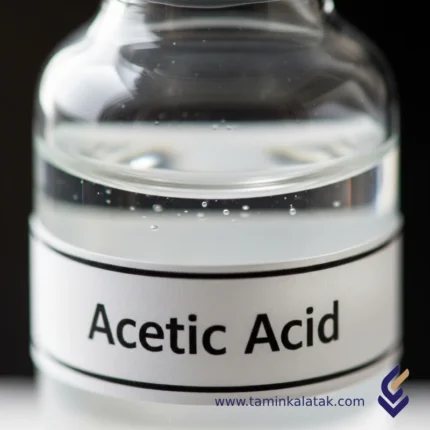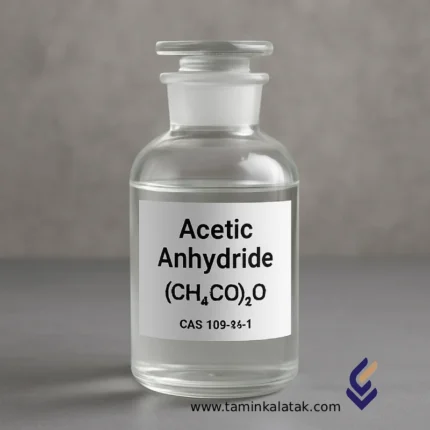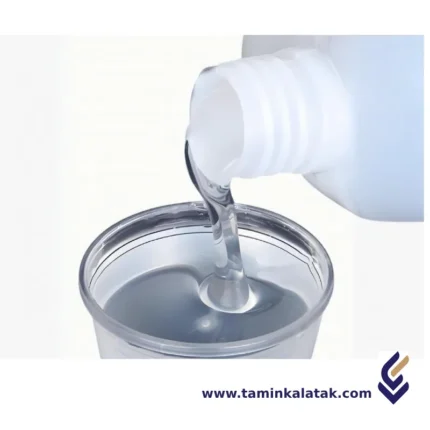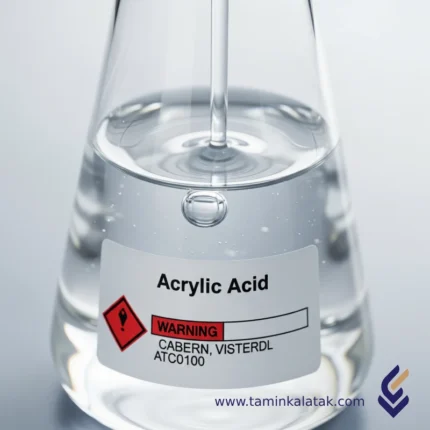1,4-Butanediol
Physical and chemical propertiesAppearance: Colorless, viscous liquid Odor: Almost odorless Solubility: Soluble in water and many organic solvents. Boiling point: Relatively high. Viscosity: Moderately viscous. Reactivity: Reacts with many chemicals to form a variety of compounds.
1,4-Butanediol ApplicationsPolymer Industry: Production of polybutylene terephthalate (PBT): One of the most important applications of 1,4-butanediol is in the production of PBT, which is used in the manufacture of fibers, films, and plastic parts. Production of polyurethanes: It is used as a diol in the production of polyurethanes, which are used in the manufacture of foams, adhesives, and coatings. Solvent Industry: Used as a solvent for paints, resins, and coatings. Used as a solvent in the production of some drugs. Chemical Industry: It is the raw material for the production of tetrahydrofuran (THF), which is an important organic solvent. Used in the production of some types of plastics, elastic fibers, and polyurethanes. Food Industry: Used as a food additive in some products.
2- Ethylhexanol
Applications
- Plasticizers
- Solvents
- Flavors and Fragrances
- Textile Industry
2-ethyl hexyl acrylate
accelerators rubber
Acetic Acid
Acetic Acid (CH₃COOH) is one of the simplest and most widely used carboxylic acids. Also known as vinegar essence or ethanoic acid, it is the main component of edible vinegar, responsible for its sour taste. At room temperature, acetic acid appears as a colorless liquid with a sharp, pungent odor. Due to its unique physical and chemical properties, acetic acid has broad applications across many industries.
Structure of Acetic Acid
The molecular structure of acetic acid consists of a methyl group (−CH₃) and a carboxyl group (−COOH), connected by a carbon–carbon bond.
The carboxyl group is responsible for the acidic properties of the compound because it can release a proton (H⁺) in aqueous solutions.
Physical and Chemical Properties of Acetic Acid
| Property | Description |
|---|---|
| Physical state | Colorless liquid at room temperature |
| Melting point | 16.6°C – Below this temperature, it solidifies into crystalline form known as glacial acetic acid |
| Boiling point | 118–119°C at 1 atm |
| Odor | Sharp, pungent, vinegar-like (irritating at high concentrations) |
| Solubility | Completely miscible with water, alcohols, ethers, and most polar organic solvents |
| Acidity (pKa) | ≈ 4.76 – weak acid, partially ionized in aqueous solution |
| Corrosiveness | Corrosive at high concentrations; may cause chemical burns to skin and eyes |
| Flammability | Flammable; vapors can form explosive mixtures with air |
| Density | ~1.049 g/cm³ at 25°C |
Applications of Acetic Acid
Acetic acid is a versatile reagent and solvent, playing a vital role in many industrial and laboratory processes.
1. Chemical Industry
-
Vinyl Acetate Monomer (VAM) production: Used to manufacture adhesives, resins, and polymers.
-
Synthesis of acetate esters such as:
-
Ethyl acetate: solvent in nail polish remover, paints, and adhesives.
-
Butyl acetate: solvent in inks and coatings.
-
-
Purified Terephthalic Acid (PTA) synthesis: key precursor for PET plastics and polyester fibers.
2. Pharmaceutical Industry
-
Intermediate in the synthesis of drugs, antibiotics, and biological compounds.
3. Textile Industry
-
Acts as a pH regulator and color fixative in dyeing and printing processes.
4. Food Industry
-
Functions as an acidity regulator and preservative (food additive code E260).
-
Primary component of vinegar and flavoring agent in sauces, pickles, and canned foods.
5. Rubber and Plastics Industry
-
Used as a catalyst or reaction modifier in polymerization processes.
6. Other Uses
-
Manufacture of pesticides and herbicides.
-
As an industrial solvent for resins, paints, and oils.
Advantages of Acetic Acid
✅ Abundant and readily available: One of the most commonly produced organic acids in the world.
✅ Chemically versatile: Participates in esterification, polymerization, oxidation, and reduction reactions.
✅ Preservative capability: Its acidity inhibits microbial growth.
✅ Mild, controllable acidity: Suitable for sensitive formulations.
✅ Biodegradable: Rapidly decomposes in nature to CO₂ and H₂O.
Disadvantages of Acetic Acid
⚠️ Corrosive: Highly concentrated forms can cause severe skin, eye, and respiratory burns.
⚠️ Pungent odor: Inhalation of concentrated vapors may cause coughing and irritation.
⚠️ Flammable: Vapors form explosive mixtures with air; must be stored away from open flames.
⚠️ High freezing point: Easily solidifies in cold climates.
⚠️ Toxic by inhalation at high concentrations: May cause lung damage.
Safety and Handling Information
| Parameter | Details |
|---|---|
| Chemical formula | CH₃COOH |
| CAS Number | 64-19-7 |
| IUPAC Name | Ethanoic Acid |
| Appearance | Clear, colorless liquid with pungent vinegar-like odor |
| Hazard Classification | Corrosive, Flammable, Respiratory Irritant |
| GHS Classification | Flammable (Cat. 3) / Corrosive (Cat. 1A) / Acute Toxicity (Cat. 4) |
Health and Safety Hazards
| Type of Exposure | Potential Effects |
|---|---|
| Skin contact | Chemical burns, redness, severe irritation |
| Eye contact | Corneal damage, potential blindness |
| Inhalation | Respiratory irritation, coughing, headache, shortness of breath |
| Ingestion | Severe throat and gastrointestinal burns; toxic or fatal in large doses |
| Reactivity | Reacts violently with strong bases, peroxides, and oxidizing agents |
Personal Protective Equipment (PPE)
| Equipment | Recommended Type |
|---|---|
| Gloves | Acid-resistant nitrile or PVC gloves |
| Eye protection | Laboratory safety goggles with side shields |
| Respiratory protection | Filter mask (organic vapor cartridge for high vapor levels) |
| Protective clothing | PVC or PE-coated lab coat/apron |
| Ventilation | Mandatory in enclosed areas – use exhaust fans or fume hoods |
Storage and Handling Conditions
| Parameter | Recommended Condition |
|---|---|
| Storage temperature | 10–30°C, away from heat and direct sunlight |
| Container material | Acid-resistant steel tanks or heavy-duty HDPE containers |
| Avoid contact with | Strong bases, reactive metals, peroxides, oxidizers |
| Flammability | Yes – flash point ≈ 39°C |
| Firefighting media | Alcohol-resistant foam, CO₂, or dry chemical powder |
| Safety labeling | Corrosive, Flammable, Respiratory Warning (GHS/CLP compliant) |
Acetic anhydride
Acetic anhydride is a simple and highly reactive acid anhydride, appearing as a colorless liquid with a strong, vinegar-like odor.
It plays a key role in industrial acetylation reactions and serves as a vital intermediate in the manufacture of cellulose acetate (used in cigarette filters), pharmaceuticals (notably aspirin and paracetamol), resins, solvents, and industrial explosives.
Because of its broad utility, acetic anhydride remains one of the most widely traded and regulated chemical intermediates globally.
Chemical Structure
-
Structural Formula: (CH₃CO)₂O
-
Molecular Description: Two acetyl groups linked through a central oxygen atom, forming a simple carboxylic acid anhydride.
Physical and Chemical Properties
| Property | Specification |
|---|---|
| Appearance | Clear, colorless liquid with a strong, pungent odor |
| Density (20 °C) | ~1.082 g/cm³ |
| Melting Point | −73 °C |
| Boiling Point | 139–140 °C |
| Vapor Pressure (36 °C) | ~10 mmHg |
| Refractive Index (nD, 20 °C) | ~1.390 |
| Solubility in Water | Reacts rapidly (hydrolyzes exothermically); ~2.6% soluble at 20 °C |
| Flash Point (Closed Cup) | 54 °C (129 °F) |
| Explosion Limits (air) | 2.0–10.2 vol% |
| Oral Toxicity (LD₅₀, rat) | ~1.78 g/kg |
Advantages
-
Primary acetylation agent in the synthesis of aspirin and paracetamol
-
Essential in producing cellulose acetate for filters, plastic films, and fibers
-
Widely used in resin, pharmaceutical, fragrance, and dye production
-
Intermediate for modified starches (E1414, E1420, E1422) in food and pharma industries
-
Functions as an efficient dehydrating and acetylating agent in chemical processes
Limitations and Hazards
-
Highly reactive with water and alcohols; hydrolyzes exothermically
-
Corrosive to skin, eyes, and mucous membranes — causes severe burns on contact or inhalation
-
Flammable and reactive with metals; requires specialized storage and transport
-
Strictly regulated precursor (U.S. DEA List II chemical) due to potential illicit use in heroin synthesis
Applications
-
Pharmaceuticals: Acetylation of salicylic acid to produce aspirin
-
Plastics & Fibers: Manufacture of cellulose acetate for films, textiles, and cigarette filters
-
Resins & Coatings: Intermediate for resins, dyes, and fragrance chemicals
-
Food Industry: Used in modified starch production (E1414–E1422)
-
Industrial Chemicals: Effective dehydrating agent in various syntheses
Safety and Regulatory Information
-
GHS Label: ⚠️ DANGER
-
Hazard Statements:
-
H226 – Flammable liquid and vapor
-
H302 – Harmful if swallowed
-
H314 – Causes severe skin burns and eye damage
-
H330 – Fatal if inhaled
-
-
Recommended PPE:
-
Chemical-resistant protective clothing
-
Safety goggles or full face shield
-
Nitrile or Viton® gloves
-
Approved respirator (limit ≤ 5 ppm per ACGIH TLV/OSHA PEL)
-
Storage and Handling
-
Store in a cool, dry, well-ventilated area, away from moisture, open flames, and strong acids
-
Use airtight, corrosion-resistant containers clearly labeled and tightly sealed
-
Avoid contact with water or incompatible materials
-
In case of leak or spill: absorb with dry inert material; keep away from ignition sources
-
Firefighting media: CO₂, dry chemical, or alcohol-resistant foam
Summary
Acetic Anhydride is an indispensable reagent in acetylation chemistry with broad industrial use in pharmaceuticals, cellulose derivatives, and coatings.
Its high reactivity and strict regulatory classification demand careful handling and storage, but its efficiency and versatility make it a cornerstone compound in organic synthesis.
Acetone
Properties of AcetoneHigh solubility: Acetone is miscible with water in almost all proportions and is also a good solvent for many organic materials such as fats, oils, resins, and plastics. High volatility: Acetone evaporates quickly, which is why it is used as a drying solvent. Flammability: Acetone vapors are highly flammable and should be kept away from flames and heat sources. Lower density than water: Acetone has a lower density than water and will float on water if spilled.
Acetone ApplicationsPaint and Coatings Industry: Used as a solvent to dilute paints, varnishes, and adhesives. Pharmaceutical Industry: Used as a solvent in the production of some medicines and cosmetic and health products. Plastics Industry: Used to clean plastic parts and bond some plastics. Electronics Industry: Used in the cleaning process of electronic components. Household Solvent: Used to remove stains, adhesives, and paints from various surfaces. Safety and Hazards of Acetone Flammability: Acetone vapors are highly flammable and should be kept away from flames and heat sources. Toxicity: Acetone can cause poisoning if swallowed or inhaled. Irritability: Direct contact of acetone with skin or eyes can cause irritation and burns.
Acrylamid
How is acrylamide formed?Acrylamide is formed when foods containing carbohydrates and asparagine (an amino acid) are cooked at high temperatures (above 120°C). At these temperatures, complex chemical reactions occur that lead to the formation of acrylamide.
Health risks of acrylamideStudies have shown that acrylamide can be harmful to human health and may increase the risk of developing certain cancers. Acrylamide can damage DNA.
acrylamide applications
- Paint Production
- Chemicals
- Contact Lenses
- Cosmetics
- Textiles - Pulp and Paper Production
- Ore Processing
- Polyacrylamide Production
Acrylamide
Acrylic
StructureThe structure of an acrylic plasticizer typically consists of a polar acrylic backbone combined with flexible, non-polar side chains or ester groups that reduce intermolecular forces within the polymer matrix. These plasticizers are often based on esters of acrylic or methacrylic acid, where the ester groups introduce flexibility by interfering with polymer chain packing, lowering the glass transition temperature and increasing elasticity. Common structures include alkyl acrylates, phthalates, trimellitates, or polymeric plasticizers, which contain long-chain hydrocarbons or aromatic rings to enhance compatibility with acrylic resins. The molecular design ensures that the plasticizer remains well-dispersed within the acrylic polymer, preventing phase separation and ensuring long-term performance stability. Depending on the application, the chemical composition may be tailored to optimize properties such as migration resistance, UV stability, and environmental safety.
PropertiesAcrylic plasticizers exhibit several important properties that enhance the performance of acrylic-based materials. They have excellent flexibility, reducing brittleness and improving the elasticity of polymers. Their compatibility with acrylic resins ensures uniform dispersion, preventing phase separation and maintaining long-term stability. These plasticizers also lower the glass transition temperature, making materials softer and more workable without compromising structural integrity. Many acrylic plasticizers offer good thermal stability, allowing them to withstand high processing temperatures without degradation. They are resistant to UV radiation and weathering, making them suitable for outdoor applications. Additionally, they can improve adhesion and impact resistance, which is beneficial in coatings, adhesives, and sealants. Some formulations are designed to be environmentally friendly, with low volatility and reduced migration to maintain performance over time.
Applications
- Used in acrylic paints and coatings to enhance flexibility and durability.
- Incorporated into adhesives and sealants to improve elasticity and adhesion.
- Applied in plastic sheets, films, and laminates to reduce brittleness.
- Utilized in textiles and leather finishes for softness and improved handling.
- Added to medical and automotive plastics for better impact resistance.
- Found in PVC alternatives and eco-friendly plastic formulations.
Advantages
- Enhances flexibility and reduces brittleness in acrylic materials.
- Provides good thermal stability for high-temperature processing.
- Offers excellent UV resistance and weather durability.
- Maintains compatibility with acrylic resins, ensuring uniform performance.
- Reduces glass transition temperature, making materials softer and easier to process.
- Available in environmentally friendly, low-migration formulations.
Disadvantages
- Some types may have volatility issues, leading to gradual plasticizer loss.
- Certain formulations, such as phthalate-based plasticizers, may have environmental and health concerns.
- Excessive use can lead to material softening beyond the desired level, affecting mechanical strength.
- Not all acrylic plasticizers are compatible with every polymer system, requiring careful selection.
Acrylic acid
Acrylic acid
Acrylic Acid is an organic compound with the chemical formula CH₂=CHCOOH. This colorless liquid has a sharp, distinctive odor and is highly reactive due to the presence of both a carboxyl group and a carbon–carbon double bond in its structure.
Structure of Acrylic Acid
The structure of acrylic acid consists of a vinyl group (CH₂=CH−) and a carboxyl group (−COOH).
The carbon–carbon double bond (vinyl bond) is responsible for its high reactivity in polymerization reactions, while the carboxyl group makes it a weak acid, enabling esterification and other reactions.
Physical and Chemical Properties of Acrylic Acid
| Property | Description |
|---|---|
| Physical state | Colorless, transparent liquid |
| Odor | Sharp and characteristic |
| Solubility | Completely miscible with water, alcohols, ethers, and chloroform |
| Reactivity | Highly reactive, especially toward polymerization. For this reason, acrylic acid is usually stabilized with small amounts of polymerization inhibitors (such as monomethyl ether hydroquinone – MEHQ) to prevent spontaneous polymerization during storage. |
| Boiling point | 139°C |
| Melting point | 13°C |
| Acidity | Weak acid |
Applications of Acrylic Acid
Acrylic acid is widely used in various industries due to its unique chemical properties and versatility:
1. Polymer and Resin Production
The primary use of acrylic acid is in the manufacture of acrylic polymers (polyacrylates).
These polymers are used in paints, coatings, adhesives, water-repellent agents, and inks.
2. Coatings and Paint Industry
Used as a monomer in the production of acrylic emulsions and resins for architectural paints, automotive coatings, and industrial finishes.
3. Superabsorbent Polymers (SAPs)
Polymers derived from acrylic acid, particularly sodium polyacrylate, have high water absorption capacity.
They are used in baby diapers, feminine hygiene products, and agriculture (as soil moisture retainers).
4. Textile Industry
Used in the production of acrylic fibers and fabrics with excellent resistance to sunlight and weathering.
5. Petroleum Additives
Improves the performance of oils and lubricants.
6. Water Treatment Chemicals
Acts as a scale inhibitor and dispersing agent.
7. Pharmaceutical Industry
Serves as an intermediate in the synthesis of certain pharmaceutical compounds.
Advantages of Acrylic Acid
✅ Wide range of applications: Due to its high reactivity and polymerization capability, it is used in manufacturing a broad spectrum of industrial products.
✅ High performance: Resulting polymers exhibit excellent mechanical, optical, and chemical properties.
✅ Durability: End products made from acrylic acid (such as coatings and paints) show strong resistance to water, weather, UV radiation, and chemicals.
✅ Excellent adhesion: Ideal for producing strong and durable adhesives.
Disadvantages of Acrylic Acid
Toxic and corrosive: Acrylic acid is corrosive and can cause severe irritation to the skin, eyes, and respiratory system. Prolonged or repeated exposure may lead to serious tissue damage.
Strong odor: Its pungent smell can be unpleasant and irritating at high concentrations.
Highly flammable: Vapors can form explosive mixtures with air.
Spontaneous polymerization: Without stabilizers, it may polymerize spontaneously, posing safety risks and damaging storage containers.
Environmental impact: Toxic to aquatic life if released into the environment.
Safety and Handling of Acrylic Acid
| Specification | Details |
|---|---|
| Chemical formula | C₃H₄O₂ |
| IUPAC name | Propenoic Acid |
| CAS Number | 79-10-7 |
| GHS Classification | Highly Flammable, Corrosive, Toxic |
| H-codes (Hazards) | H226, H302, H314, H335, H412 |
Health and Safety Hazards
| Type of Exposure | Hazards |
|---|---|
| Skin contact | Severe burns, redness, inflammation, possible dermal absorption |
| Eye contact | Serious damage, possible vision loss |
| Inhalation | Respiratory irritation, coughing, headache |
| Ingestion | Burns to mouth, throat, and stomach – dangerous if swallowed |
| Fire risk | Highly flammable (flash point ≈ 10°C) |
| Reactivity | Strong polymerization if heated or exposed to peroxides |
Recommended Safety Measures
| Item | Recommendation |
|---|---|
| Gloves | Acid-resistant nitrile or neoprene gloves |
| Eye protection | Safety goggles with side shields / full-face shield |
| Respiratory protection | Filter mask (organic vapor cartridge) for closed areas or prolonged exposure |
| Ventilation | Mandatory – use closed systems or fume hoods |
| Protective clothing | Chemical-resistant protective suit or lab apron |
Storage Conditions for Acrylic Acid
| Factor | Recommended Condition |
|---|---|
| Storage temperature | Below 25°C (preferably below 10°C) |
| Storage containers | Epoxy-coated steel tanks or HDPE tanks with stabilizers |
| Stabilizing additive | Hydroquinone (ppm levels) to prevent polymerization |
| Storage environment | Dry, cool, well-ventilated, away from ignition sources |
| Incompatible materials | Oxidizing agents, nitric acid, peroxides, strong bases |
| Flammability | High – use foam, CO₂, or dry powder for fire control |
| Shelf life | Up to 6 months (under proper storage and thermal stability conditions) |











